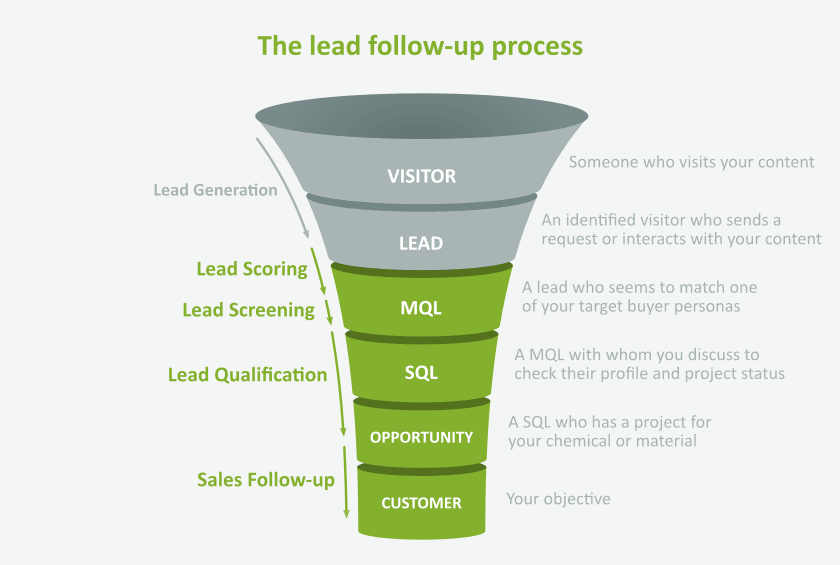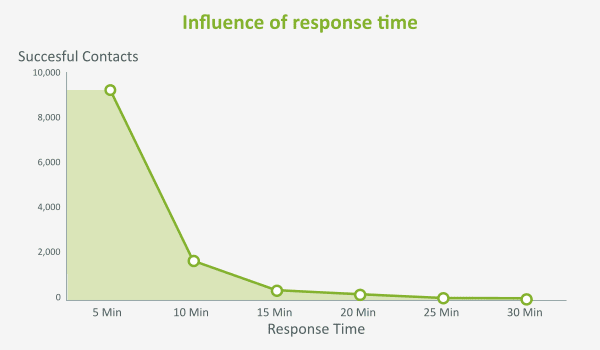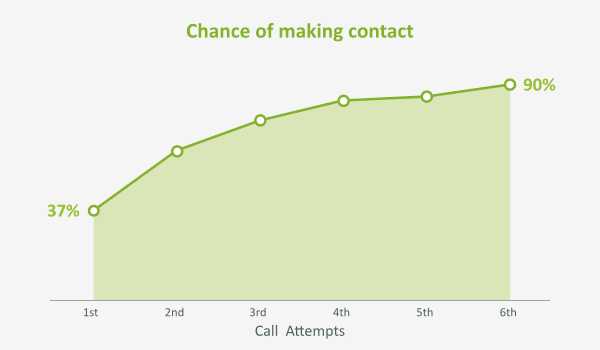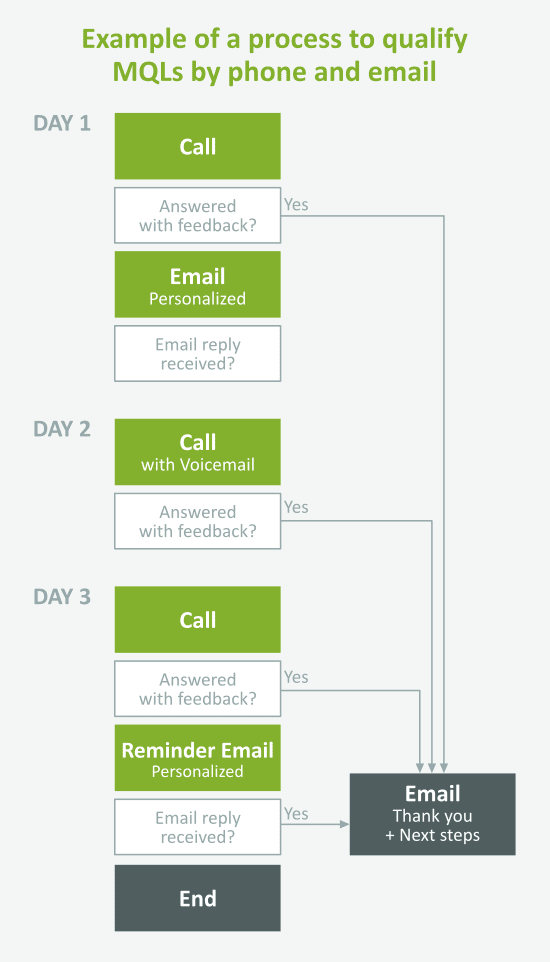9 Lead follow-up best practices for chemical suppliers
The follow-up of digital leads is a common struggle for suppliers: “My leads don’t convert into sales — where is my ROI?”.
Here is the typical lead follow-up scenario that I’m hearing over and over.
The lead follow-up is assigned and the sales team perceives this as an option to follow up with when they get time. “We will dispatch you the marketing leads from now on. "Follow-up with them please” says the manager.
Good luck with that.
And guess what happens next?
Exactly what you think.
After a few unsuccessful contact attempts, your salespeople will simply give up and stop wasting their time. And they are right.
And too often, lead quality is wrongly pointed out as the main reason for failure: “The leads are cr@#, they don’t answer my call and don’t reply to my email”.
But in lead follow-up, “FOLLOW-UP” is the keyword!
Trust me, digital leads don’t convert 99% of the time because of a poor or ineffective follow-up, not because of the lead quality.
So, if your follow-up isn’t 100% effective, or if you blame your failure on your lead quality, here are my 9 best practices to have a lead follow-up that works!
|
Summary 1. Make your follow-up a process 3. Be reactive 4. Don't sell, share expertise to build trust 5. Personalize each communication 6. Mix channels |
What is lead follow-up?
In marketing, the lead-follow-up is the process to convert your leads into customers.
It accelerates your ability to rapidly engage your hottest leads — the leads that are in your target and who have shown a strong interest in your products and services — to convert them into customers.
This process involves your entire revenue team, including the marketing, inside sales and sales or account managers.

1 - Make your lead follow-up a real process
To stop sending your marketing leads into a black hole, you need to consider your lead follow-up as a process, which requires:
- Time: Lead follow-up takes a lot of time. Make sure that the people in charge have an appropriate workload to absorb this process.
- Qualified Resources: Lead follow-up is often mistaken as a regular sales follow-up but it’s not. You cannot approach a lead with a strong sales-oriented pitch. Instead, you need to be valued by your “lead” as an advisor or a problem solver. This builds trust! With this in mind, you need the right experience, skills, mindset and approach to succeed.
- Structure: You need to monitor and improve your performance over time. A clear and detailed process is key to identify your conversion bottlenecks.
Here is an example for how to sequence your follow-up, and who should be responsible for each step:
- Score your leads’ profiles and interests > Marketing
- Screen your leads for qualification > Marketing + Inside Sales
- Qualify your leads > Inside Sales
- Convert your leads into customers > Sales Team
2 - Screen your leads
Hopefully, you don’t have to follow-up with all your leads — and you shouldn’t anyway — because most of them are not ready to move forward with your sales team.
A good follow-up starts by first screening your leads to identify and qualify the ones that are most likely to close.
I recommend you use these 2 complementary screenings:
- Use lead scoring to automate your screening
Automatically identify the contacts that are in your target profile, and who are seriously considering your product. The number of pages viewed, type of content, topics, downloads, submitted forms… Every interaction with your content will increase their “interest score” until it reaches a certain threshold that triggers an alert.
- Manually screen all the other leads in order to spot hidden gems
Consider your lead scoring as a wide net that catches most of the fish. But some may pass through its mesh. For example, a single document download can be a great opportunity to engage the discussion with a key account, but only a human eye can spot that interaction from the mass.
3 - Be reactive
Our clients always ask us “what is the best time to follow-up a lead?”
Ideally, within 1 hour.
Really? By now, you are cringing with a “Wooow! That’s short!”.
So, imagine my face when a client told me once that they follow-up their leads 5 months later…😱 And yes, they complained that the leads were not good.
Your chance to reach a lead quickly fades away after a couple of hours.
Once you have identified a lead to follow-up, it is fundamentally urgent to engage the discussion.
But it is not always possible to follow-up in that short amount of time given the resources that we have. If you want to setup a manageable target to start with, I recommend that your follow-up does not exceed 24 hours.

4 – Don’t sell. Share your expertise and useful content to build trust.
In your follow-up, you are not here to unload your sales pitch or ask for a specific quantity or purchase volume. You don’t even know if the lead has a project yet. And this is what you need to know and discuss.
At this stage, consider your leads as cautious wild animals who do not want to speak with you — they keep their distance because they don’t want to be trapped by your sales predators.
Seriously, most of the leads are heavily reluctant to complete and submit a form to contact suppliers for various reasons.
It takes time. It is complicated. They don’t want to be harassed. They will do it “tomorrow”. It takes ages to receive an answer. They may receive tons of unwanted emails.
And WORST OF ALL, they will have to undergo an hour meeting to listen to your commercial pitch in order to get a simple answer.
The goal of your follow-up is to relieve that pain and kill that feeling by creating trust with your lead.
The path to success is how effectively you can prove to your lead that you want to help them solve their problem. You are here to provide your expertise and help them make an informed decision – even if your product is not the right choice!
What? Recommend a competitive alternative when you are clearly not a fit? There is no quicker way to build trust than to remove your own self-interest and present a fair perspective on their options.
Your leads certainly have questions at this stage, and in an ideal follow-up, you already share the answer even before they asked.
First, gain their trust. Hook them with additional content about their usual questions. Second, offer your help to discuss their case and see if your solutions could be a good fit for them.
5 - Personalize each of your communication
One size doesn’t fit all. And it is the same with your follow-up. Each lead is unique even though they may share common traits.
You can use templates to save time, but you really need to personalize every email or phone call to each lead.
What content did they consume? What are their topics of interest? What are the documents that they interacted with? How long and how often have they been on your website?
The more personalized your approach, the more likely you are to get a response.
6 - Mix channels
A common mistake that I see is that suppliers tend to stick to email-only or phone-only follow-ups.
Some of your leads may not pick up the phone from unknown numbers.
That is why leaving a personal voicemail is critical, and puts the human element back into your communication. Don’t make your voicemails generic – personalize it with a quick tip or mention that you have some case studies to share which may help them solve their problem.
Mix various channels, at least 2, like email, phone, but also LinkedIn, and even text messages. In some regions, WhatsApp or WeChat apps can further maximize your chances to deliver your message and get a response.
7 - Be persistent and create a follow-up schedule
Another frequent mistake is to give up on your lead after just one attempt.
Be persistent. Really. Believe it or not, our best practices have shown that it takes 6 attempts in your follow-up spread out 3 – 10 days in order to reach 90% of your leads.

And to maximize your chance of success, create a schedule with clear timing between each stop. This way, you won’t miss any attempt, reminder or next steps in your follow-up.
Here is one process example that we use at SpecialChem to follow-up with the leads we generate for our clients.

I also recommend you consider using marketing automation to automate this process as much as possible with alerts, reminders or email templates to customize.
Your team will be able to invest their time in more valuable follow-up actions.
8 - Track your performances
You can’t improve what you don’t measure in real-time.
Make sure to track your lead follow-up within your CRM. Create dashboards to monitor the KPIs of your conversion funnel.
Here are some KPIs that I recommend:
- Conversion rate from Marketing leads to Opportunities: to monitor your overall performance
- Conversion rate by lead scoring: to refine or improve your lead scoring
- Time of first follow-up: to see how reactive you are
- Number of attempts: to track your persistence
- Time to get an answer: to determine the maximum time when you can stop your follow-up
- Channel of answer: to prioritize the best channels in your follow-up process
9 – Not all your leads will convert. It is normal.
A common source of frustration comes from unrealistic high expectations. Be realistic.
When you launch a new process, you have no idea what a good or bad conversion rate is. But I have seen many of our clients set the bar really high just because of their lack of knowledge and benchmarks.
At SpecialChem, we’ve measured that 12% of our clients Marketing Qualified Leads convert into Opportunities in average, if you have a good lead scoring, screening and qualification.
I hope this has inspired you on how you can effectively improve your lead follow-up process for maximum conversion into sales.
If that does not happen, at least you will have many new valued relationships from the trust you have built and created by becoming a problem solver and advisor to your future customers.
And take a look at the related articles linked below. You'll find additional best practices to setup your lead qualification and a basic lead scoring.